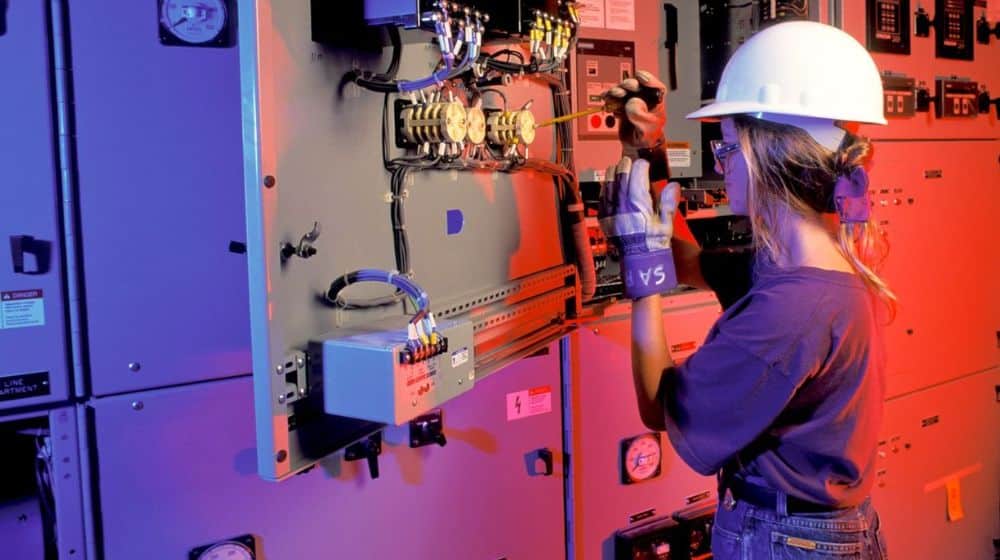The United States faces a pressing need for 1 million additional electricians to meet its environmental objectives. However, the shortage of male electricians has shed light on the significance of increasing female representation in this field. In this article, we will explore the opportunities and benefits of pursuing a career in electrical work, emphasizing the importance of addressing the underrepresentation of women and bridging the gap in the US job market.
The Need for Gender Diversity in Electrical Work
Traditionally, electrical work has been predominantly performed by men. According to The Guardian and the US Bureau of Labor Statistics (BLS), only 2 percent of electricians in the country are women. As the nation strives to transition from fossil fuels to electricity, there is a growing demand for skilled electricians, particularly in initiatives such as the installation of solar panels, heat pumps, and electric vehicle charging stations. Achieving environmental goals heavily relies on the successful execution of these projects, highlighting the urgent need to increase female representation in the field.
The Opportunity for a Rewarding Career
Becoming an electrician can offer a fulfilling career choice for young individuals who aspire to contribute to the betterment of the world while earning a good living. Noted author and journalist Bill McKibben, in an interview with The New York Times, emphasized the abundant opportunities in the field. With the average annual salary of an electrician surpassing $60,000 in 2021, and master electricians earning six-figure salaries, it is one of the highest-paying blue-collar jobs available, without the requirement of a college degree.
Job Outlook and Growth Potential
According to the BLS, the electrical sector projects an average of 80,000 job openings for electricians annually over the next decade. These vacancies will primarily arise from the need to replace retirees and those transitioning to other occupations. Sam Kalish, head of research at Rewiring America, underlines the potential for growth in this industry. With such promising prospects, pursuing a career in electrical work can provide stability, job security, and opportunities for career advancement.
READ MORE: Night Landing Operations at Gwadar International Airport: A Milestone Achievement
Highlighting the Benefits of Electrical Work
Connie Ashbrook, a retired construction worker and co-chair, sheds light on the favorable aspects of this industry. She highlights that electrical work offers the highest pay among blue-collar jobs, without the requirement for a college education. This makes it an attractive choice for individuals seeking financial stability and a secure future.
Addressing the Underrepresentation of Women in Electrical Work
Addressing the shortage of electricians, particularly the underrepresentation of women, is crucial for meeting the country’s environmental goals and ensuring a skilled workforce for the growing demand in the electrical sector. Encouraging women to pursue careers in electrical work will not only help bridge the gender gap but also bring diverse perspectives, skills, and talents to the industry. To achieve this, various initiatives can be implemented, such as:
- Education and Outreach Programs: Implementing targeted educational programs to promote electrical work among women, starting from schools and universities. This can include workshops, seminars, and career guidance sessions highlighting the benefits and opportunities available.
- Mentorship and Support Networks: Establishing mentorship programs where experienced female electricians can guide and inspire aspiring women in the field. Support networks can provide a platform for women to connect, share experiences, and overcome challenges together.
- Promoting Female Role Models: Recognizing and showcasing successful women in electrical work through media, industry events, and online platforms. By highlighting their achievements, more women can envision themselves thriving in this field.
- Diversity and Inclusion Policies: Encouraging employers in the electrical sector to adopt inclusive hiring practices and create supportive work environments that value and respect gender diversity.
Conclusion
Increasing female representation in electrical work is crucial to fulfill the nation’s environmental objectives and bridge the gap in the US job market. By offering rewarding careers, high earning potential, and opportunities for growth, electrical work can attract more women and create a skilled and diverse workforce for the future. Through targeted initiatives and the promotion of gender diversity, we can build a sustainable and inclusive industry that drives innovation and progress.




